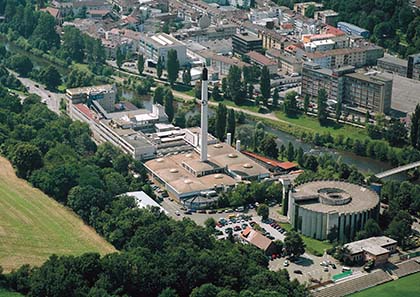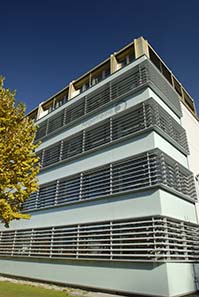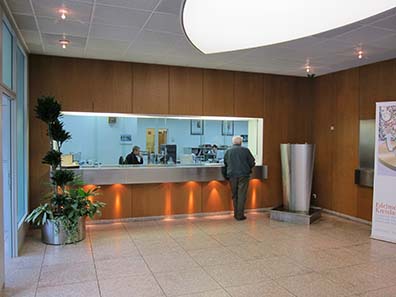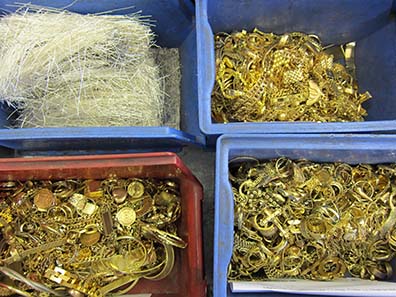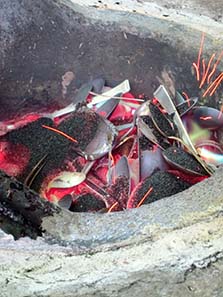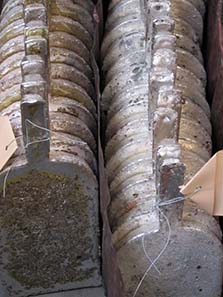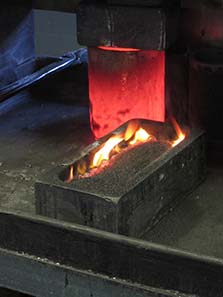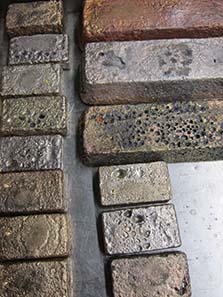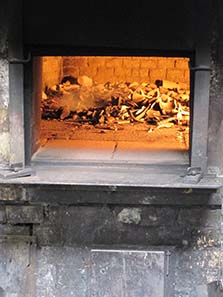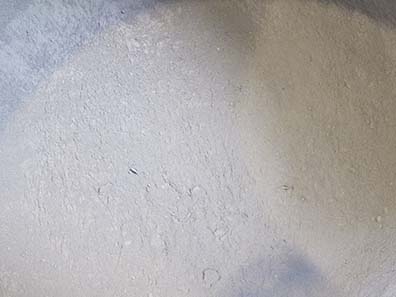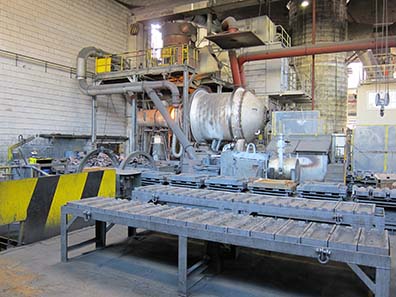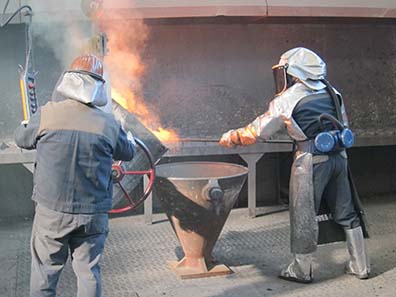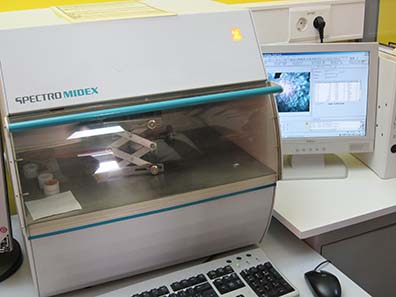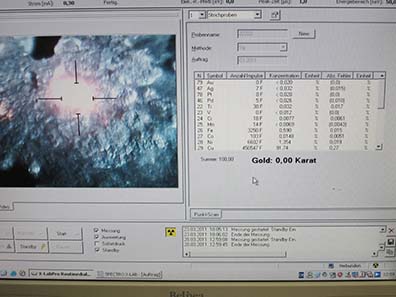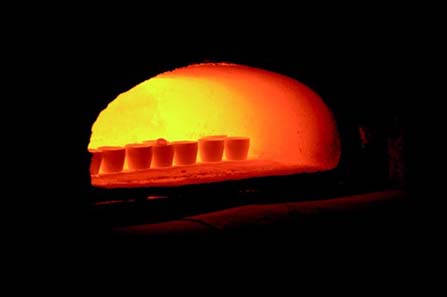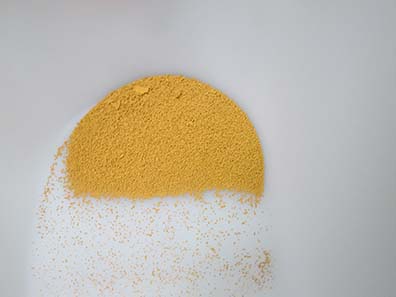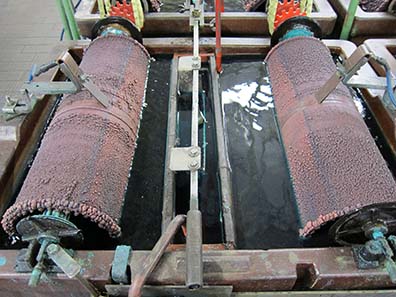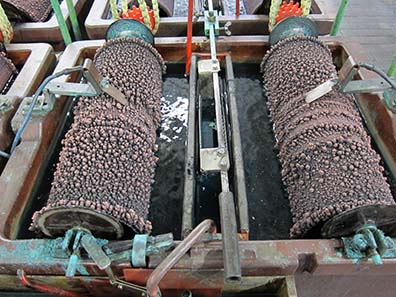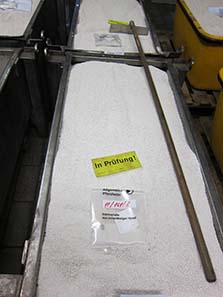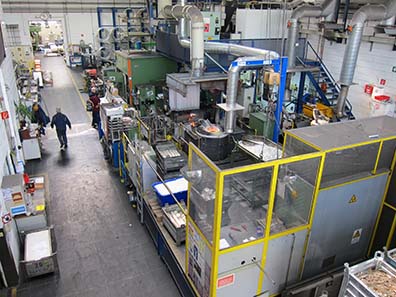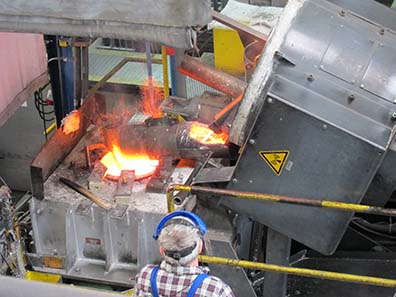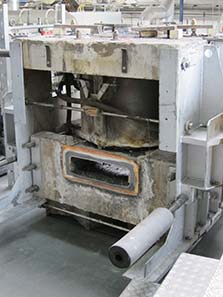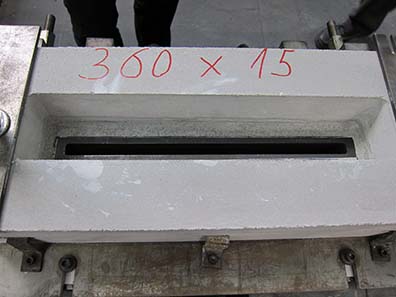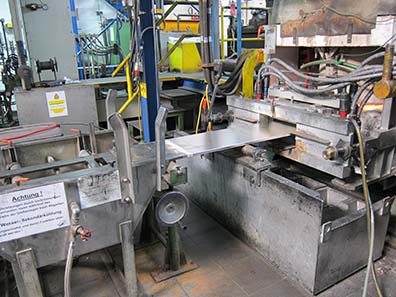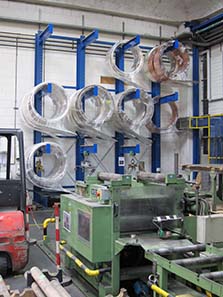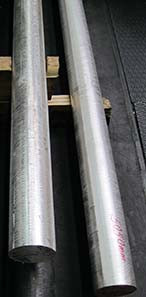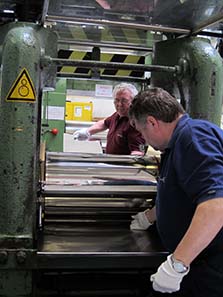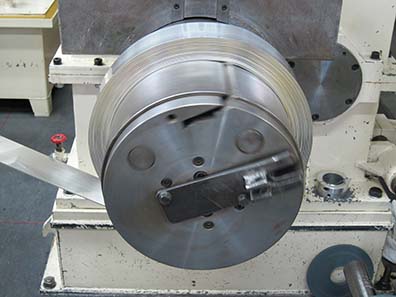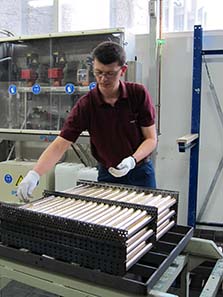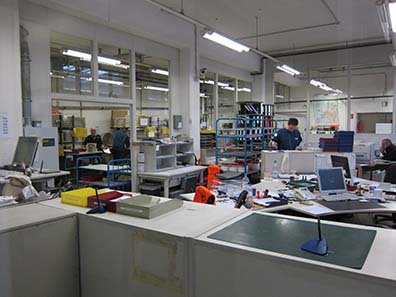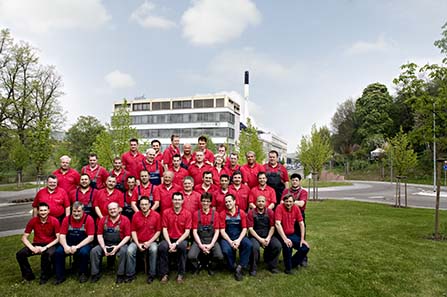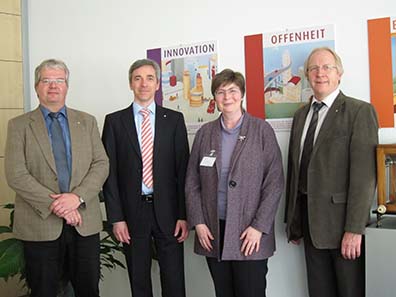Allgemeine is one of the biggest refineries for precious metal in Europe. It has opened the doors of its factory in German Pforzheim to CoinsWeekly. We were allowed to watch the process of transforming silver and gold scrap to pure precious metal blanks. Please join us on this fascinating tour.
The company site of Allgemeine at German Pforzheim. Photo: © Allgemeine.
Here are some facts and figures: 360 employees, more than 600 million euro annual turnover, interests in companies in Amsterdam, Vienna, Great Britain, Italy, Thailand and Canada. Allgemeine – an abbreviation for Allgemeine Gold- und Silberscheideanstalt AG – is one of the biggest refineries for precious metal in Europe.
The front of Allgemeine’s main building. Photo: © Allgemeine.
In 1891, Allgemeine was founded as stock company. Today, it is held by the Belgian Umicore Group. This company is a little bit younger than Allgemeine. It was founded in 1909 under the name of Union Minière du Haut Katanga. This name points to the fact that the company made its first profit by exploiting the mines of Katanga known by each collector of traditional money for the famous Katanga crosses.
The lobby – usually, visitors are not allowed to move beyond this point. Photo: UK.
Most visitors of Allgemeine only see the lobby. There, they hand their silver and gold scrap to the persons in charge. What is done with this material you will read within this article.
Gold and silver scrap. Photo: UK.
Stephan Cravaack, Marketing Manager Product Refining, is giving us a tour of the department where mixed precious metal bearing scrap and waste materials are transformed into pure fine metal. He explains that each consignment receives a lot number. Nothing will be mixed. Every lot is handled separately until the exact precious metal content has been determined and the transaction between Allgemeine and consigner has been closed.
This lot of silver scrap will be melted down within a few seconds. Photo: UK.
Now, each lot of precious metal bearing scrap will be melted down in order to transform diverse objects into a homogeneous mixture whose precious metal content can be analyzed at one time. Then, the lab will figure out exactly how much gold, how much silver, how much other components form part of the alloy.
Corresponding to the size of the lot the melting furnace will be chosen. Here we are at the department for “smaller” lots of silver.
Silver cutlery can become the base material for German commemorative coins. Photo: UK.
At 1000 degrees Celsius Grandma’s silver cutlery is melted in order to be transformed to pure silver which may end – somehow, somewhen – as German commemorative coin.
Moulds of ingots. Photo: UK.
The molten material is poured into moulds and formed into ingots with a handle in order to facilitate the handling.
“Spätzlebretter” made of precious metal. Photo: UK.
These bars are called “Spätzlebretter” because of their form which reminds of a special kitchen device used by Swabian house-wives use to prepare a local speciality called “spätzle”.
Here old jewelry is melted down. Photo: UK.
Here old jewelry containing mainly gold is melted down…
none
The melted jewelry is cast in ingots. Photo: UK.
…and cast in ingots.
Ingot of melted jewelry. Photo: UK.
Here you can see the ingots. They all are marked with lot numbers so you can assign each ingot to the client who has consigned it.
Even waste becomes gold. Photo: UK.
Allgemeine does not only refine what bullion dealers have bought. Here precious metal bearing waste from the metalworking industry is transformed into pure gold and silver, too. It is profitable because of the enormous quantities even though the precious metal content may be some per mill. Goldsmiths, for example, ought to have a look at what they sweep up and wipe away. It can be refined at Allgemeine.
Hard to believe! There’s gold in it. Photo: UK.
This pile of trash contains gold!
In the melting furnace. Photo: UK.
Here impure material is burned. The pieces of wood and the cleaning rags will contain traces of precious metal.
This powder contains gold, silver, platinum and who knows what else. Photo: UK.
You might consider this powder ash. But there are little traces of precious metal in it.
This is how you can process further the precious metal bearing powder. Photo: UK.
The precious metal bearing powder can only be processed further, when it is treated with a chemical solution whose components are strictly secret. The powder and the solution result in a kind of brown mud which does not recall at all gold or silver.
The rotary furnace has a capacity of 5 tons of precious metal bearing material. Photo: UK.
The huge amounts of gold and silver bearing waste, which is delivered especially by the metalworking industry, are melted within the rotary furnace.
The slag is separated from the molten metal. Photo: UK.
The molten metal comes out of the furnace within a big tub. Now, the slag has to be poured off.
The ingots are molded. Photo: UK.
Then, the “Spätzlebretter” are molded. It is the form we already know from the smaller melting furnaces.
It is obvious that this kind of work requests high safety standards. Allgemeine pursues a “Zero-Accident-Policy”. The aim is not only to reduce accidents but to avoid them. All employees of Allgemeine are committed to this aim.
Assay chips from a gold ingot. Photo: UK.
Each and every single ingot can still be assigned to the client who has consigned the raw material. Now the lab has to provide reliable data, how much gold, silver, platinum or palladium can be extracted.
In order to get an exact result each bar is sampled two times. The samples will be carefully analyzed in the lab under the direction of Ms. Silvia Ast who gave us a tour through the laboratories.
The composition of the ingot is first measured automatically. Photo: UK.
The first examination will be done with the X-ray spectrometer. Thus, the lab gets an overview of the approximate composition of the ingot without expensive preparation of the samples.
The result of the X-ray spectroscopy. Photo: UK.
The result shows a list of metals and how much of each was found in the ingot.
The sample for the in-depth analysis. Photo: UK.
For centuries the method for analyzing the gold content has remained the same. First a sample is weighed. It will be alloyed with lead. This heavy metal serves as collector, as a kind of supporting agent, which combines with all the impurities.
The cupels used for the cupellation still look like their medieval predecessors. Photo: © Allgemeine.
Now the cupellation follows. This process makes use of the fact that gold and silver are difficult to oxidate, while this can be done easily with molten base metal. In the cuppelation furnace the base metal is oxidated and will be absorbed by the cupel. The precious metal remains in the form of a small pearl. Aquafortis will separate gold and silver.
As soon as you have the result for the small amount of material, it is a simple arithmetic problem to find out the precious metal content of the whole lot. The client will be informed about the result. Then the deal is closed. And now, finally, the ingots can be refined.
Sand of pure gold. Photo: UK.
How the gold refinery is done in detail is kept confidential. Chemistry and electrolysis play an important role,when the ingots are broken down to their components. The final product does not look like the precious metal. The gold sand gives a rather lusterless impression. There is only a slim chance that a sack of gold sand forgotten at a parking site is being stolen.
Station for electrolysis. Photo: UK.
Here the “Spätzlebretter” are separated into their components by means of the chemical procedure of electrolysis.
Station for electrolysis, a few hours later. Photo: UK.
The copper deposits at the role. The pure silver is to be found within the solution. The pure gold, platinum and palladium are precipitated and accumulate at the bottom of the trough.
The finest silver sand. Photo: UK.
The silver won by electrolysis will be processed further. In the end we will have the purest silver sand as the basic metal for the production of semi-finished products.
Continuous casting furnace. Photo: UK.
Now we enter the next department, the production of semi-finished products. Dr. Peter Tews will give us a tour. He explains that Allgemeine is one of the biggest European producers of silver semi-finished products like tubes for jewelers, which can easily be transformed to rings, silver sheets and of course blanks, on which the German commemorative coins are struck.
This huge continuous casting furnace is able to handle 10 tons of silver a day.
The requested alloy is composed in the furnace. Photo: UK.
Be it 925, 900, 600, 500 – every silver alloy can be produced in this furnace. While the molten metal is still “cooking”, an assay is sent to the lab in order to find out whether the alloy is correct or missing metal has to be added.
Preparing of the furnaces. Photo: UK.
The furnaces are prepared at Allgemeine. The “coquille” is a very important part of it. A coquille is a formed opening out of which the metal is drawn.
The “coquille”. Photo: UK.
This is what the coquille looks like. This opening affects the form of the product. It depends on the coquille which one is produced, a silver strip or a silver rod.
Here a broad sheet comes out of the coquille. Photo: UK.
Here a broad sheet leaves the coquille. Piece by piece the molten metal has flown into the form. There, water has cooled down the material and the surface of the molten metal has firmed up. Thus a long sheet was produced which is continuously pulled out of the coquille.
By the way, “cooled down” is a very relative term. Anyone daring to touch this silver sheet will get the fingers burnt.
Coils made of different metal alloys. Photo: UK.
These pre-rolled sheets hanging at the walls are called coils. They are the original material for many different semi-finished products. Coin blanks for example are made from coils like these.
Silver rods. Photo: UK.
Silver rods can play an important role in numismatics, too. They can be cut into blanks for the huge “coins” weighing 1, 3 and 5 kilos.
Rolling out the silver sheets. Photo: UK.
Here rolled silver is produced. When this object is finished its surface will be so flat that it could be used as a mirror.
Starting material for coin blanks – part 1. Photo: UK.
For producing coin blanks silver strips are needed. Here they are cut into the fitting width, rolled into the correct thickness…
Starting material for coin blanks – part 2. Photo: UK.
…and coiled again.
Coil marked with its fineness. Photo: UK.
Every strip is carefully marked with its silver content in order to produce blanks of the required fineness.
Production of blanks. Photo: UK.
This machine stamps coin blanks from the strip. If the client requires it, they will be processed further. The catalogue of Allgemeine offers plane and rimmed blanks with bright rolled, brush finished, polished, pickled or unpickled surface.
Blanks for German commemorative coins. Photo: UK.
These are blanks for the production of German commemorative coins.
Preparing the next working step. Photo: UK.
Here they are carefully prepared for the next working step.
Blanks for German gold coins. Photo: UK.
These blanks will become German 20-Euro commemorative coins “German Forrest”.
Blanks for 1-kilo-coins. Photo: UK.
And these silver targets will be transformed into 1-kilo-coins of silver.
Shipping department: UK.
The shipping department is responsible that all products reach the customer in time.
Part of the team of Allgemeine. Photo: © Allgemeine.
The team of Allgemeine can be proud of their products.
From left to right: Stephan Cravaack, Senior Sales Manager Refining Services, Jürgen Weissheimer, Senior Sales Manager Coin Blanks, Ursula Kampmann, CoinsWeekly, Ulrich Hartmann, Senior Sales Manager Industrial Products. Photo: Ulrike Beuchle.
And this was the end of our guided tour of Allgemeine. CoinsWeekly wants to thank everybody for the warm welcome we were given.




